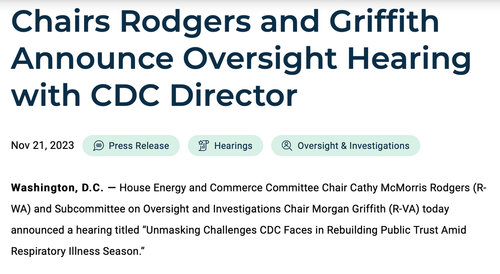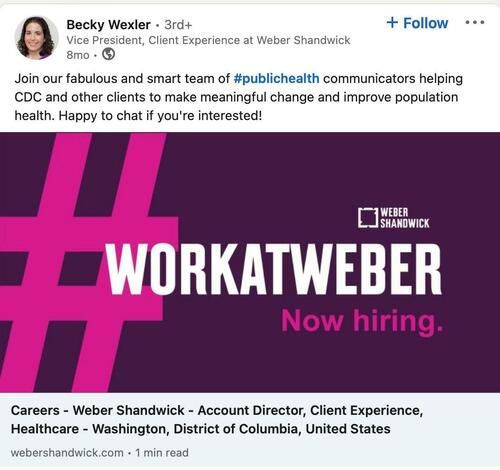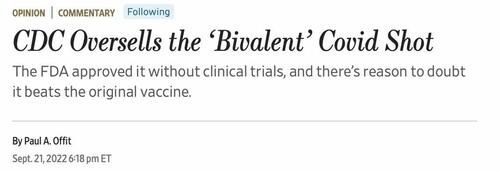In the pursuit of optimal health, regular physical activity (PA) is recommended to protect against dementia, cardiovascular disease (CVD), cancer, and other noncommunicable diseases. A significant body of research suggests the benefits of PA are positively correlated with higher frequency and intensity — with more often deemed better. This research has spawned a focus on increasing step counts and investing in standing desks and other interventions aimed at keeping people active.
But for many people, PA is a work requirement over which they have little control, and emerging evidence suggests that these workers not only do not reap the benefits associated with leisure-time PA, but they also actually experience an increased risk for the very conditions that PA is intended to prevent.
A study published recently in The Lancet Regional Health – Europe used registry data from more than 7000 adults in Norway, following them from age 33 to 65 years, to assess PA trajectories and risks for later-life mild cognitive impairment (MCI) and dementia at age 70 or older.
"Incorporating a life-course perspective gives a broader picture of how participants' occupational histories relate to cognitive impairment later in life," principal investigator Vegard Skirbekk, PhD, Columbia University Mailman School of Public Health, New York City, told Medscape Medical News. Other studies typically have assessed occupational PA at a single time point, often close to the end of an individual's career, and largely relied on self-report, he said.
Study participants worked in more than 300 different occupations. General physical activities performed on the included jobs required "considerable" use of arms and legs and moving the whole body, such as climbing, lifting, balancing, walking, stooping, and handling of materials.
Skirbekk and colleagues grouped participants into four PA trajectories over the 44-year study period: stable low, increasing then decreasing, stable intermediate, and stable high.
A total of 902 individuals were diagnosed with dementia and 2407 with MCI at age 70 years or older. After adjustment, risks for MCI and dementia were 15.5% for those with higher occupational PA scores in the latter part of their working life and 9% for those with lower physical demands. The researchers conclude that "consistently working in an occupation with intermediate or high occupational PA was linked to an increased risk of cognitive impairment."
The findings support those of the Copenhagen Male Study. Published in 2020, this longitudinal study compared leisure-time and occupational PA among more than 4000 men in Denmark aged 40-59 at baseline in 1970-1971 and followed them until they turned 60. After adjustment, participants with high occupational PA had a 55% greater risk of developing dementia compared with those doing sedentary work.
Good vs Bad PA
Kirsten Nabe-Nielsen, PhD, lead author of this study, is quoted as saying, "[T]he WHO [World Health Organization] guide to preventing dementia and disease on the whole mentions physical activity as an important factor. But our study suggests that it must be a 'good' form of physical activity, which hard physical work is not."
Beyond dementia, another recent study adds to a wealth of data on associations between occupational PA and cardiovascular risks. The cross-sectional analysis of US data from the National Institute for Occupational Safety and Health showed that odds of CVD were higher when participants were "always" performing total occupational activity (odds ratio [OR], 1.99), occupational exertion (OR, 2.15), or occupational standing and walking around (OR, 1.84) compared with "never" engaging in these activities.
"Our national guidelines for PA include occupational activity," lead author Tyler Quinn, PhD, MS, West Virginia University, Morgantown, told Medscape Medical News. "But it's clear that a lot of people who are getting a lot of occupational PA, particularly socioeconomic and racial/ethnic minorities, are not getting benefits from it."
The contrasting effects of leisure-time vs occupational PA constitute the "physical activity paradox" hypothesis. Starting in 2011, multiple studies by Andreas Holtermann of the National Research Centre for the Working Environment lend support to the PA paradox theory, as do subsequent studies by others.
Although only "marginally considered" until a few years ago, recent large cohort studies seem to confirm the paradox, writes Pier Luigi Temporelli, MD in a recent editorial.
In separate interviews, Skirbekk and Quinn pointed to the PA paradox as an explanation for their own recent findings, suggesting that the mechanisms that underlie it probably are responsible for the associated deleterious effects of occupational PA on the brain and heart, and even mortality.
"It's well established that PA in your leisure time can be positive, but in the workplace, the results are quite the opposite," Skirbekk said. "The specific mechanisms for why occupational PA is associated with elevated dementia risk are still not well understood and we need more knowledge. But we know that higher occupational physical demands have been linked to smaller hippocampal volume and poorer memory performance."
Furthermore, he said, individuals working in jobs with high demands, both psychological and physical, combined with low job control perform more poorly on cognitive testing later in life.
"We looked mainly at professions where people have heavy workloads and you have much less autonomy, such as nursing assistants, office cleaners, childcare workers, and other personal care workers," he said. "You cannot sit. You have somebody relying on you. It's not all pleasure, and it can be very hard. That's where we find the associations."
Lack of Autonomy
Specific characteristics indirectly associated with high occupational PA jobs — low cognitive stimuli, lifestyle factors, and socioeconomic influences — as well as factors directly related to high occupational PA, such as long hours, repetitive tasks, low levels of control, and stress, could also adversely affect cognitive trajectories, Skirbekk explained.
"By contrast, leisure-time physical activities tend to be of much shorter duration; are associated with socialization, play, [and] positive emotions; and [include] the opportunity to take breaks or shift to other types of activities if one prefers," he said. "It may also be that too little or too much PA could be adversely related to cognitive outcomes — hence moderate activity levels, for example 10,000 steps a day, are still likely beneficial for cognitive functioning."
Quinn said most of the CVD risk linked to occupational PA, has to do with long periods of exertion such as lifting and carrying objects. While occupational standing and walking all day are also linked to CVD risk, they're not as risky as lifting and carrying, he said.
Like Skirbekk, Quinn noted that individuals can take a break from leisure-time PA when they are tired, but occupational PA doesn't have that same autonomy to allow for recovery.
"So, in many cases, individuals are not getting the recovery their body needs to actually experience PA benefits, because those benefits come during rest," Quinn said.
"We've shown that PA at work raises acute cardiovascular responses, which are related to cardiovascular risk. For example, 24-hour and waking heart rate and diastolic blood pressure, as well as nonwork diastolic blood pressure, all were significantly higher on workdays versus non–workdays," he said.
Quinn also said that psychological stress at work amplifies risk. "A person who does PA at work and is stressed is likely to be at greater risk than someone who has a physically active job but doesn't have psychological stress combined with it."
Research Gaps
However, Skirbekk noted that there are strategies that can reduce the risk for MCI and dementia despite high levels of occupational PA. "It is often difficult to change professions, and even if you do, it won't immediately affect cognition. But altering one's lifestyle is likely to have effects on cognitive development across the life cycle.
"Many clinicians say they always advise lifestyle changes, but nothing happens. But it makes sense to emphasize that these changes — stopping smoking, eating well, getting proper sleep, etc. — affect not only cardiovascular risk but also cognition. And I think clinicians should also take a patient's occupation into account during any evaluation," Skirbekk noted.
Quinn said it isn't realistic to expect workers to come up with solutions to the PA paradox because many don't have the autonomy to be able to mitigate their occupational risk.
"I think administrative controls and policy changes eventually will be the levers of change. We're not quite there yet, but those are the types of things we should do when we're trying to reduce loads in some way, or reduce the time that people spend doing certain tasks we know are potentially bad," he said.
However, not everyone agrees that occupational PA doesn't confer the same benefits of leisure-time PA, at least with respect to cardiovascular risk. For example, the Prospective Urban Rural Epidemiology (PURE) study, which includes a cohort of 130,000 people from 17 high-income, middle-income, and low-income countries, concluded that both higher recreational and nonrecreational PA were associated with a lower risk for mortality and CVD events.
What additional research is needed to clarify the effects of occupational and leisure-time activity and to address conflicting findings?
"Even studies coming out now regarding the effects of occupational PA have mainly used older data," Skirbekk noted. "Labor markets and job demands have changed over time. There are different types of tasks and skills required now than there were 20 or 40 years ago. And of course, working from home is a recent phenomenon that's happened on a large scale and might affect daily routines, sleep patterns, and also cognition. We need a better understanding of what the consequences might be."
Health Inequity Issue
More research is also necessary to understand the social determinants of cognitive decline, impairment, and dementia, he said. "Many of the studies we see today are based on self-report of what someone has done in the past, which is particularly problematic for individuals who are impaired or who give interviews with others, which can induce biases."
Quinn suggests that PA guidelines may need to differentiate between occupational and leisure-time PA to better reflect current research findings.
Meanwhile, Skirbekk and Quinn both point to the toll that occupational PA takes on the brain and body in lower-income workers as an important health equity issue.
"Our national guidelines for PA include occupational activity," said Quinn. "But it's clear that a lot of people who are getting a lot of occupational PA, particularly socioeconomic and racial/ethnic minorities, are not benefitting from it."
Holtermann, who has arguably done the most research to date on the PA paradox, noted in a recent editorial that the majority of workers with high occupational PA have a low socioeconomic position and therefore "improving our understanding of the underlying mechanisms behind the PA health paradox and identifying new intervention targets along those pathways will be an important step to reduce socioeconomic health inequalities across the globe."
https://www.medscape.com/viewarticle/998772





